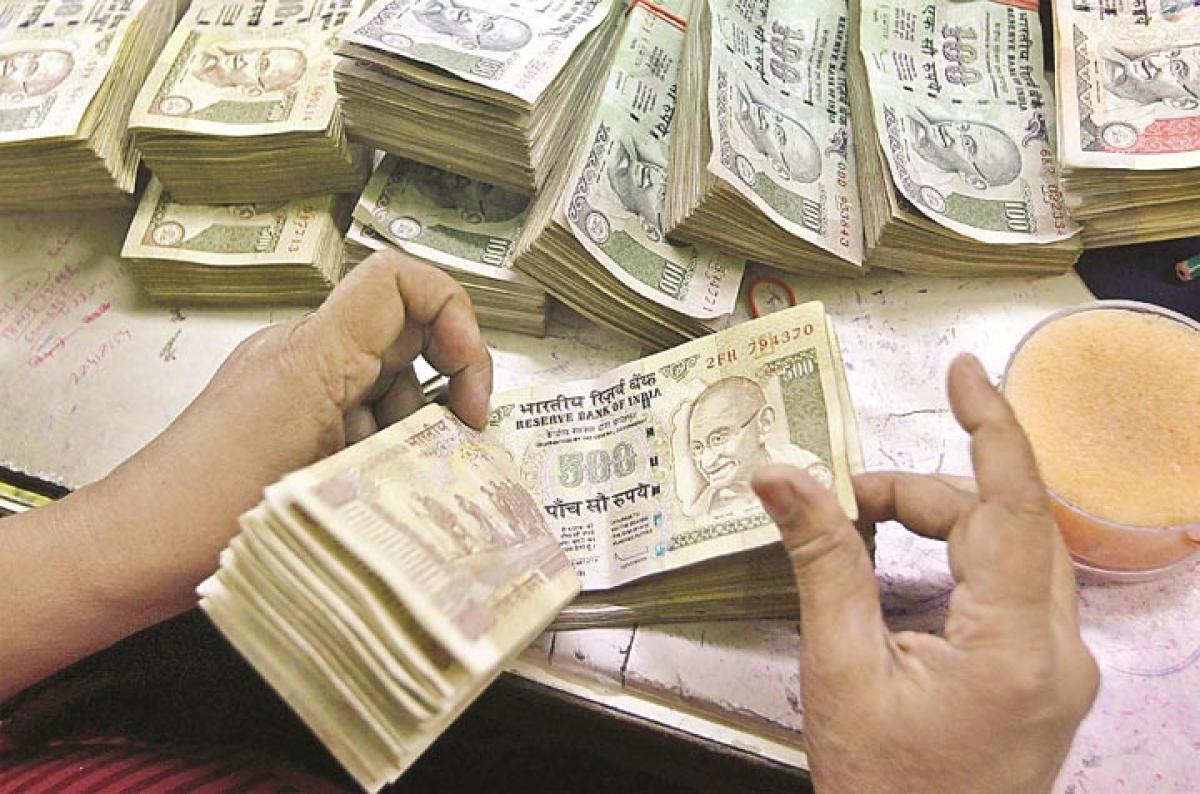Live
- First Impressions and Unboxing of the MacBook Pro M4: A Powerhouse for Professionals and Creators
- China Gears Up for Potential Trade War Amid Trump’s Tariff Threats
- Small Farmers Gain Less by Selling to Supermarkets: Study Reveals
- Why Despite the Controversy, America Is Anticipating the Mike Tyson vs. Jake Paul Fight
- Sanju Samson and Tilak Varma Shine: Record-Breaking Feats in 4th T20I Against South Africa
- India Urges $1.3 Trillion Annual Climate Support for Developing Nations
- Bad air: 106 shuttle buses, 60 extra Metro trips planned to make Delhiites give up cars
- WHO reports declining monkeypox cases in Congo
- CM Attends Kotideepotsavam on Kartika Purnima
- PKL Season 11: Raiding trio of Devank, Ayan, Sandeep help Patna Pirates rout Bengal Warriorz
Just In

With the onset of new banks entering the industry, existing players are harping on wider use of technology to meet the aspirations of new age customers. Even traditionally, old banks are introduced many online services and gearing up to open fully electronic branches.
With the onset of new banks entering the industry, existing players are harping on wider use of technology to meet the aspirations of new age customers. Even traditionally, old banks are introduced many online services and gearing up to open fully electronic branches. Thus, banks are investing on acquiring better technological capabilities to gradually further improve quality of customer service with several innovative products and services.
But still more of them offered free while their cost to bank is on rise. Many of them need the assistance of consultants and technology service providers with recurring costs. The next step is to intensify use of alternate delivery channels and mobile banking products that can make banking available on move.
Cost implications
But when seen as a trade-off between investments made in acquiring newer technology and value accruing from it, banks will have to go a long way in harnessing it. In many forums, Reserve Bank of India (RBI) observed that despite adoption of latest technology, the cost of operations has not come down in banks. Despite huge up-gradation of technology and rolling out technology driven products, the ratio of intermediation cost to total assets of banks have not only come down but has inched up from 1.75 percent in FY13 to 1.77 per cent in FY15 highlighting the fact that technology is yet to deliver value to banks.
As a result, ratio of operating profits to total assets has come down from 2.13 per cent to 2.02 per cent during the same period. Banks have to launch massive technology literacy campaigns to ensure that cost of operations in banks is brought down by increased usage of electronic banking.
Diminishing profits
In addition to the cost implications of adding technology, the base rate is turning competitive, more so, it will, after April 1, 2016, when it may go down still further with the new method of computation of base rates. Banks are vying to make investment on technology yield better synergy in operations; another debilitating impact is the reducing profits of banks. Logically when business grows, profits should move up. But the data of last three years indicates to the contrary as given in the table below.
RBI data indicates that the volume of business of banks is growing but the profits instead of moving up in tandem are receding. The performance of banks of the last three years shows that total business has increased from Rs 133,095 billion in FY13 to Rs 168,233 billion in FY15 but the profits during the same period has gone down from Rs 911 billion to Rs 891 billion manifesting sign of diminishing profitability of the banks. One of the critical reasons for such state is the surge in gross NPAs from 3.2 per cent to 4.3 per cent during the last three years.
The challenge
While banks are in the milieu of technology aided transformation, the customers are yet to get used to experiencing the new age banking. The new business is on electronic mode but as e-literacy levels are at low ebb, most of the existing consumers are comfortable with traditional mode of banking.
Such gulf leads to underuse of technology infrastructure and hence it is unable to pay back to banks on the expected lines. Banks have therefore to tackle two sets of challenges (i) Reduce the transaction costs by greater use of technology (ii) improve the asset quality by enhanced monitoring with the help of technology.
In the process, banks which can disseminate IT literacy among consumers and who can apply IT tools in better monitoring asset quality can stay ahead. Bank consumers on the other hand will have to make greater use of technology of banks to perceive value in the services dispensed by banks. Way forward, technology will be a differentiating factor in taking the bank to the next level. Banks are in for another spell of challenges in taking technology to its customers and transcend its benefit to larger use in management of asset quality.

© 2024 Hyderabad Media House Limited/The Hans India. All rights reserved. Powered by hocalwire.com







